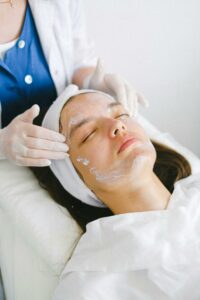What is SPF?
Sunscreens are agents that help prevent the sun’s ultraviolet (UV) radiation from reaching the skin. Two types of ultraviolet radiation, UVA and UVB cause premature aging and skin cancer. UVA penetrate the skin more deeply, and its associated with wrinkling, leathering, and sagging of the skin. UVB rays are associated with skin cancer. Sunscreens vary in their ability to protect against UVA and UVB.
Who Should Use Sunscreen?
Anyone over the age of six months should use a sunscreen daily.
Children under the age of six months should not be exposed to the sun. Shade and protective clothing are the best ways to protect infants from the sun.
What type of Sunscreen should I use?
The answer depends on how much sun exposure you’re anticipating. In all cases we recommend a broad-spectrum sunscreen offering protection against both UVA and UVB rays. Many after-shave lotions and moisturizers have a sunscreen (usually SPF 15 or greater) already in them, and this is sufficient for everyday activities. However, if you work outside or spend a lot of time outdoors, you need stronger, water-resistant, sunscreen. The “water resistant” and “very water resistant” types are also good for hot days or while playing sports, because they’re less likely to drip into your eyes. However, these sunscreens may not be as good for everyday wear.
Many of the sunscreens available in the US today combine several different active chemical sunscreen ingredients in order to provide broad-spectrum protection. I recommend sunblocks that cover both UVA and UVB: benzophenones , avobenzone (Parsol 1789), ecamsule (MexorylTM), titanium dioxide, or zinc oxide.




